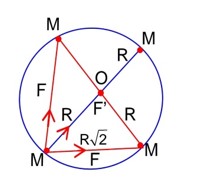Class 11th
Get insights from 8k questions on Class 11th, answered by students, alumni, and experts. You may also ask and answer any question you like about Class 11th
Follow Ask QuestionQuestions
Discussions
Active Users
Followers
New answer posted
3 months agoContributor-Level 10
Load of mass will be equally distributed among the four colours so force on each columns will be 125 * 103 N.
Cross section area of the column =
Using young's modulus :
New answer posted
3 months agoContributor-Level 10
In SHM sum of kinetic and potential energy will be constant and average kinetic energy & average potential energy in one time will be remains same.
New answer posted
3 months agoContributor-Level 9
Length of perpendicular from origin to xcosec a - y sec a = k cot2 a and x sin a + ycos a = k sin 2a are
and
on solving these two we get 4p2 + q2 = k2
New answer posted
3 months agoContributor-Level 9
Let f (t) = t4 + 2t3 – t – 6

f' (t) = 4t3 + 6t2 – 1f
Þf' (0) = -1, f' (+
For t > 0
Þ f' (t) = 0 has only one root.
One solution of f (t) = 0 is possible
New answer posted
3 months agoContributor-Level 10
Acceleration due to gravity at r distance above the surface =
Acceleration due to gravity at r distance below the surface =
So, ratio =
New answer posted
3 months agoContributor-Level 9
Equation of plane is 3x – 2y + 4z – 7 +
It passes through (1, 4, -3) and we get
Taking an Exam? Selecting a College?
Get authentic answers from experts, students and alumni that you won't find anywhere else
Sign Up on ShikshaOn Shiksha, get access to
- 65k Colleges
- 1.2k Exams
- 679k Reviews
- 1800k Answers


